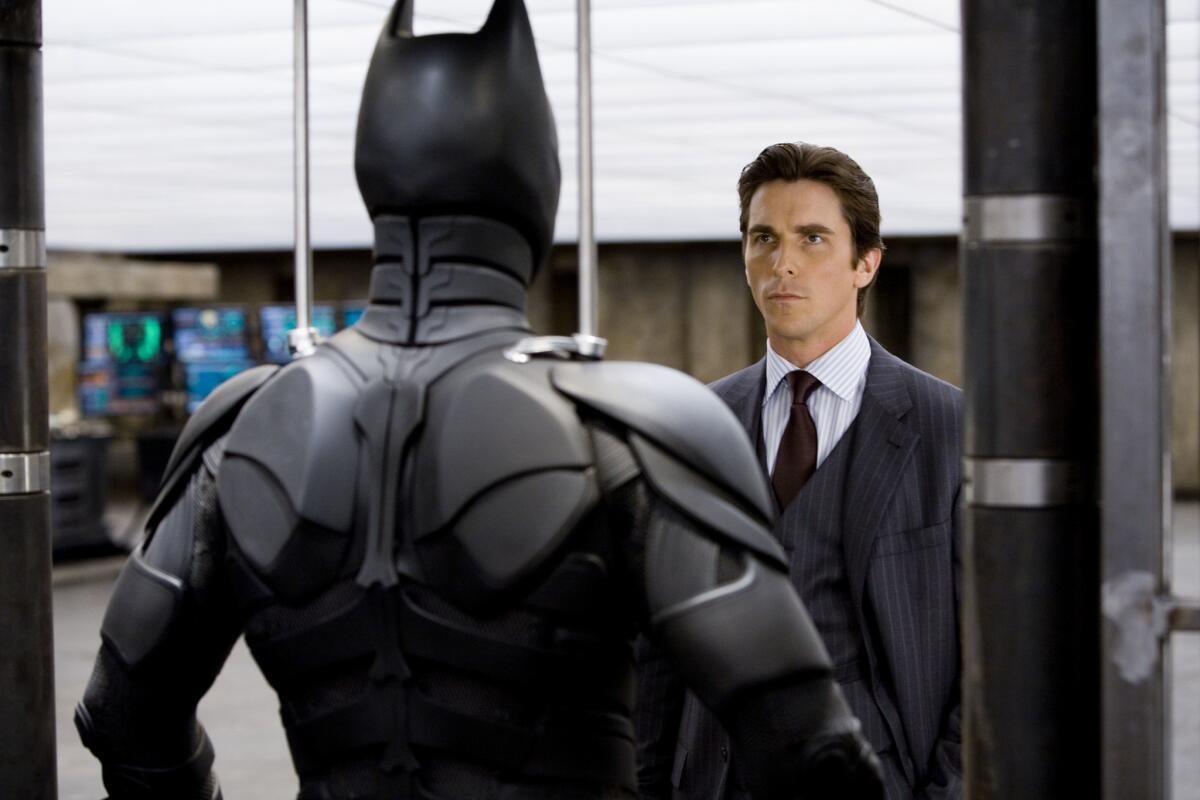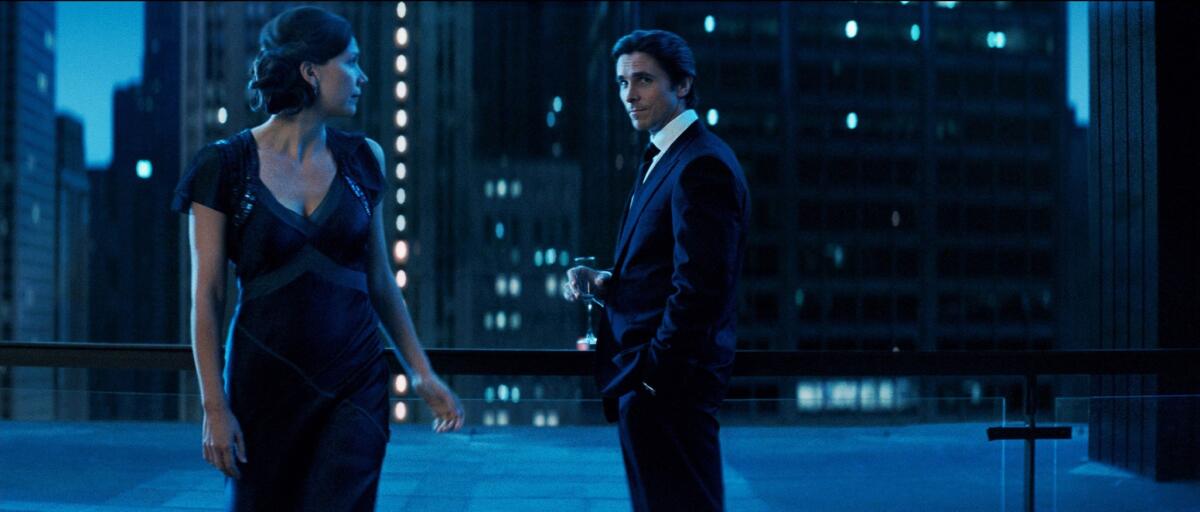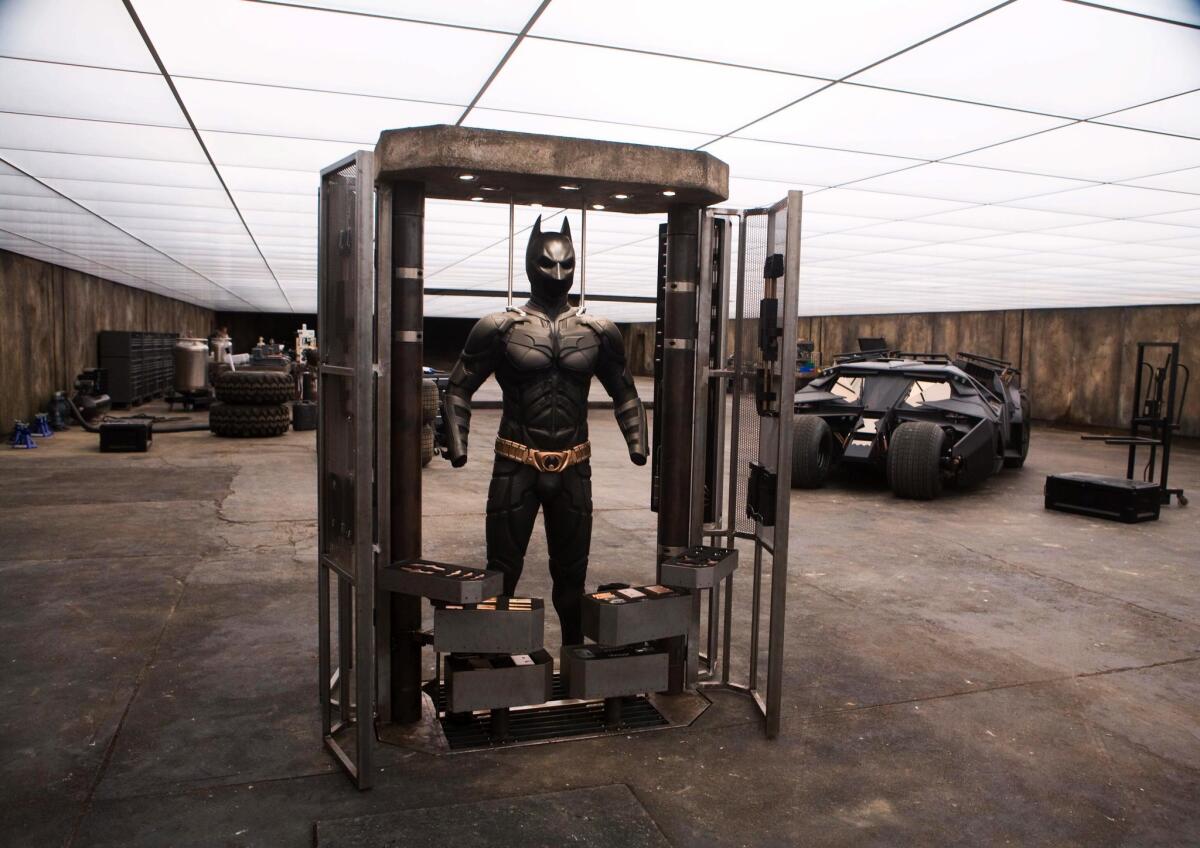How Christopher Nolan used architecture to alienating effect in ‘The Dark Knight’
The movie begins with a smash.
Specifically, an explosion of glass as a clown-masked bank robber blasts a window from the flank of a corporate tower from the 1980s. The robber and his various masked accomplices then prepare to wreak mayhem as they abscond with the mountains of money stored in a neighboring bank (played by the old Chicago post office, an Art Moderne structure from 1932).
“The Dark Knight,” the acclaimed second entry in director Christopher Nolan’s blockbuster Batman trilogy, returns to select Imax theaters for its 10th anniversary.
The film lives on in the cultural lore for a variety of reasons.
There is Heath Ledger’s deft performance as the Joker, in which he took a role that could have been all cartoon, and turned it into something more unhinged. And there were the ways in which the film’s mortal plotlines seemed to seep into real life — namely, Ledger’s death from an accidental overdose before “The Dark Knight” made it to the big screen. (He was awarded a posthumous Academy Award for his work.)
But what made “The Dark Knight” truly remarkable is that Nolan set his Gotham not in some villainous realm, but in the contemporary American cityscape (principally, Chicago).
Nolan’s astute, cinematic deployment of architecture is no accident.

“The only job that was ever of interest to me other than filmmaking is architecture,” he told Wired in 2010. “And I’m very interested in the similarities or analogies between the way in which we experience a three-dimensional space that an architect has created and the way in which an audience experiences a cinematic narrative that constructs a three-dimensional reality from a two-dimensional medium.”
In Nolan’s Gotham, gone were the exaggerated backlot arches and overwrought sculpture of the Expressionist metropolis depicted in the 1980s and ’90s films made by Tim Burton. Instead, in “The Dark Knight,” Nolan gives us architectural life as we live it.
Bruce Wayne doesn’t reside in some fusty mansion on the outskirts. He inhabits a tower in the middle of the city, the Art Deco Chicago Board of Trade building. The boardroom of Wayne Enterprises isn’t some clubby wood-paneled salon from another era. It’s a crisp, minimalist room in a modern building that offers floor-to-ceiling city views. And in a scene in which the Joker is unleashing pandemonium on LaSalle Street with an 18-wheeler, the camera flies past rows of everyday glass towers, a FedEx office supply store and a Starbucks.
Nolan didn’t need to invent alienating architecture for Batman. We have built it ourselves.

It is Batman’s environs, in particular, that seem to offer the most vivid departure from Gotham’s past. The Batcave isn’t some dark, Gothic lair. It’s a high-tech research lab, rife with Béton brut concrete walls and a bright geometric ceiling. This Bruce Wayne is no batty recluse; he’s a business man.
In fact, the architecture ends up playing right into a plot that is straight out of today’s debates about technological privacy. Late in the film, Wayne finds a way of using a special sonar program to turn on the microphone in every cellphone in Gotham so that he can track the Joker’s moves.
Scientist Lucius Fox (played by Morgan Freeman) objects: “Spying on 30 million people is not in my job description,” he says. Batman (Christian Bale) ignores the ethical concern — at least until he can get the Joker — leaving Fox staring helplessly at a wall of computer monitors in the bunker.
Re-read the L.A. Times' coverage of 'The Dark Knight' » »
The not-always-moral ways in which big business achieves its aims are alluded to regularly throughout the film via Nolan’s regular use of corporate modern architecture as backdrop. There are glass towers, glassy conference rooms and Bruce Wayne’s glassy urban penthouse — Trump Tower can be seen in the background, and its exterior stands in for Wayne Enterprises in the trilogy’s finale, “The Dark Knight Rises” — their reflective surfaces obscuring the activities that lie beneath.
As the Joker tells Batman in one scene: “When the chips are down, these civilized people will eat each other.”
In many ways, “The Dark Knight” is a story about haves and have-nots. Bruce Wayne has infinite wealth acquired in undisclosed ways. The Joker had a father who sliced up his face, or so he says.
“All you care about is money,” the Joker laughs as he torches a pyramid of stacked bills. “This town deserves a better class of criminal, and I’m going to give it to them.”
And the town Nolan gives us is better than we deserve. Throughout the film, Nolan uses stairwells and atria to masterfully frame shots. He transforms the urban canyons of Chicago into a gladiatorial arena. He even shoots in the city’s guts — setting one particularly tense chase scene on Lower Wacker Drive, a tunnel of grim concrete obscured by gleaming towers.
For Nolan, what sits on the surface is as important as what lies beneath.

Sign up for our weekly Essential Arts & Culture newsletter »
[email protected] | Twitter: @cmonstah
The biggest entertainment stories
Get our big stories about Hollywood, film, television, music, arts, culture and more right in your inbox as soon as they publish.
You may occasionally receive promotional content from the Los Angeles Times.








